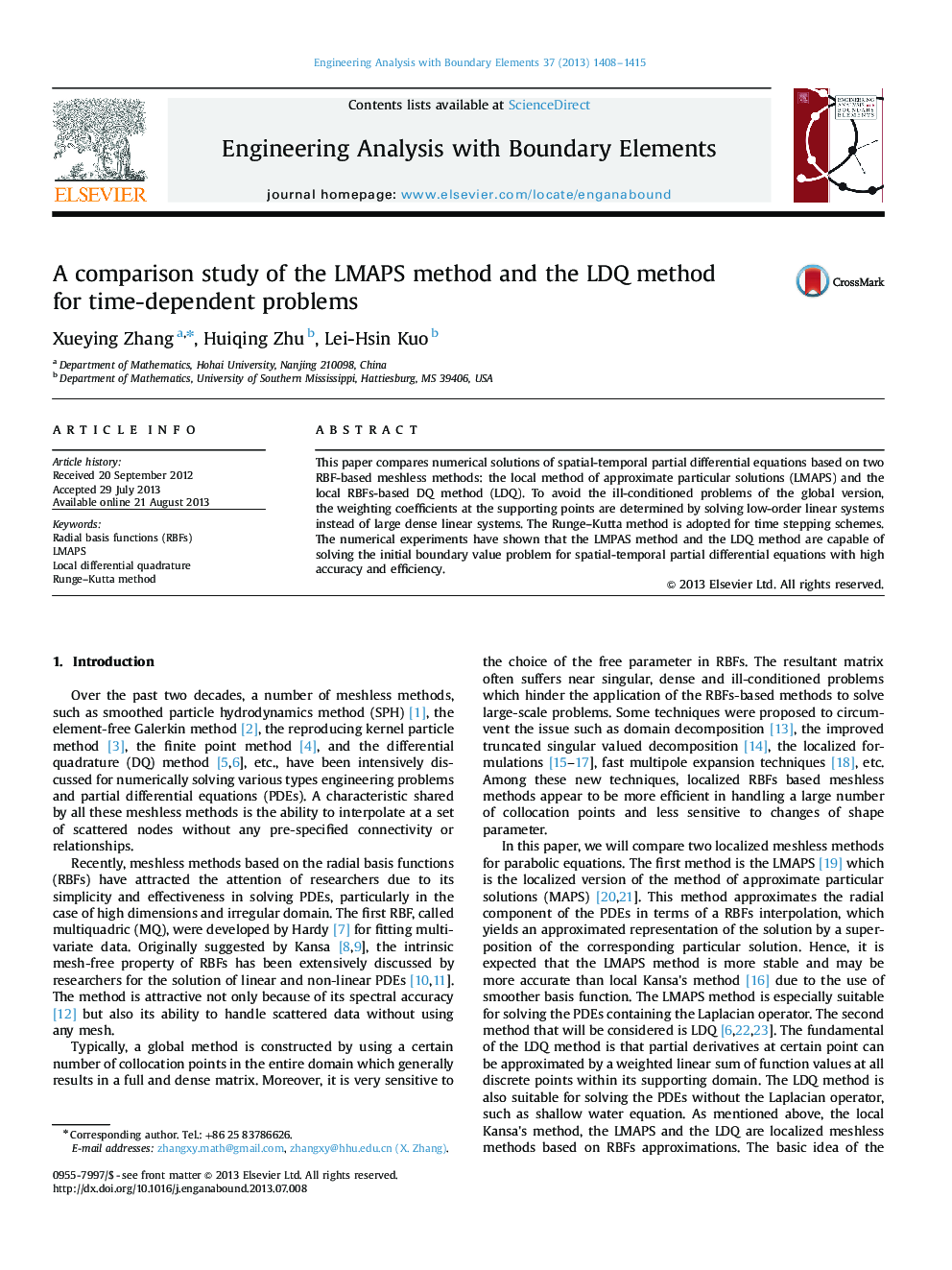| Article ID | Journal | Published Year | Pages | File Type |
|---|---|---|---|---|
| 512535 | Engineering Analysis with Boundary Elements | 2013 | 8 Pages |
Abstract
This paper compares numerical solutions of spatial-temporal partial differential equations based on two RBF-based meshless methods: the local method of approximate particular solutions (LMAPS) and the local RBFs-based DQ method (LDQ). To avoid the ill-conditioned problems of the global version, the weighting coefficients at the supporting points are determined by solving low-order linear systems instead of large dense linear systems. The Runge-Kutta method is adopted for time stepping schemes. The numerical experiments have shown that the LMPAS method and the LDQ method are capable of solving the initial boundary value problem for spatial-temporal partial differential equations with high accuracy and efficiency.
Related Topics
Physical Sciences and Engineering
Computer Science
Computer Science Applications
Authors
Xueying Zhang, Huiqing Zhu, Lei-Hsin Kuo,
